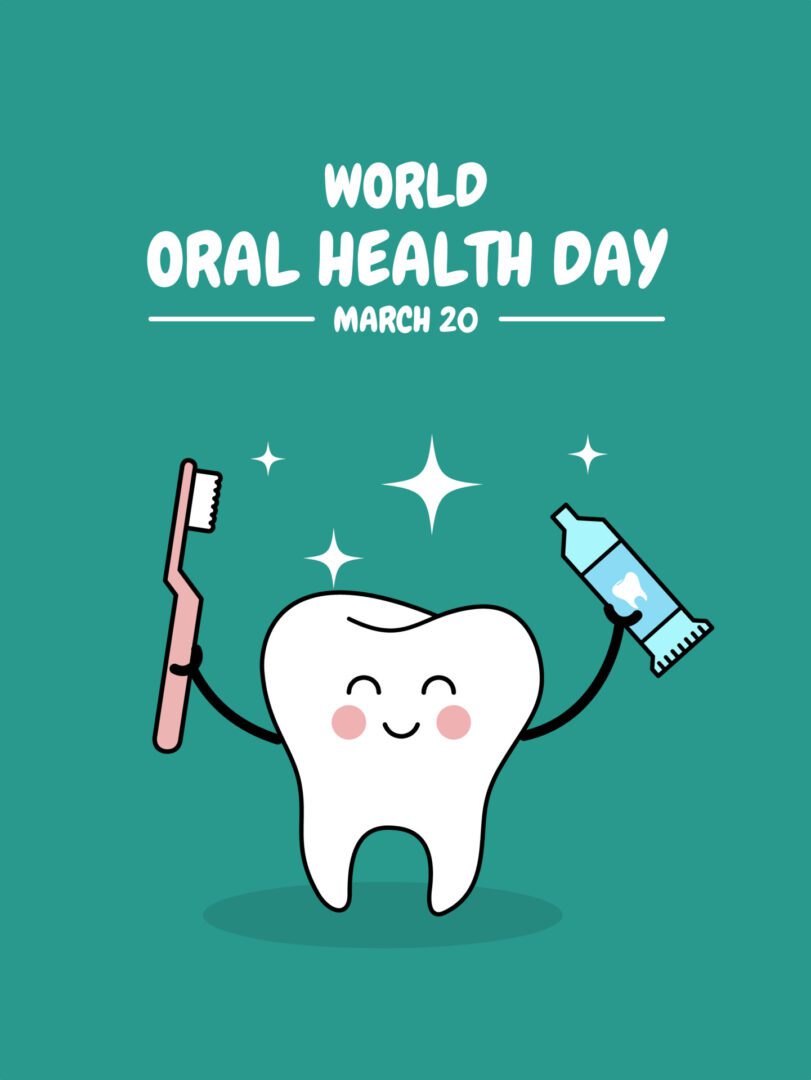Search by Color or Cause


A new congressional resolution is recognizing World Oral Health Day, which takes place every year on March 20. To support World Health Day, wear an awareness ribbon.
The awareness color for oral health is white. In addition, the color for gum disease is pink and red. Although many awareness campaigns focus on physical health, oral health is extremely important. However, it is sometimes forgotten. This World Oral Health Day calls attention to the importance of good oral health.
On World Oral Health Day, WHO is urging countries of the South-East Asia Region to accelerate implementation of the Region’s new Action Plan for Oral Health 2022–2030. Furthermore, this plan aims to ensure that everyone in the Region can enjoy the highest attainable state of oral health. There is also a focus on achieving universal coverage for oral health by 2030.
Globally, oral diseases affect an estimated 3.5 billion people worldwide. Between 1990 and 2019, estimated case numbers of oral diseases increased by more than 1 billion. This translates to a 50% increase, higher than the population increase of about 45% in the same period. Oral diseases are caused by a range of modifiable risk factors common to many noncommunicable diseases. These include sugar consumption, tobacco use, alcohol use and poor hygiene, and their underlying social and commercial determinants.
Recognizing the public health importance of major oral diseases and conditions, in 2021 WHO formulated a Regional Action Plan for Oral Health. This is based on the inputs of all Member States. The Plan was unanimously endorsed at the Seventy-fifth Session of the WHO Regional Committee in 2022. It was accompanied by a resolution to report progress every two years.
It is the first plan to be developed based on the new WHO Global Strategy on oral health. In addition, the plan is built on a situation analysis of the Region‘s progress, successes and challenges. In based this on the previous oral health strategy 2013–2020. It aims to achieve a 33.3% relative reduction of premature mortality from oral cancer and a 25% relative reduction in the prevalence of untreated dental caries of permanent teeth by 2030. It also aims to achieve universal coverage for oral health.
First, strengthening national oral health programs, which must be accorded high-level support and adequate financing. Ministries of health must have dedicated, qualified, functional, well-resourced and accountable oral health units. The units are integrated with existing internal structures and collaborate across program areas.
Second, expanding oral health promotion in schools, workplaces and other community settings.Every opportunity must be grasped to engage and empower, and to instill life-long oral hygiene practices. In addition, a goal is to reduce common risk factors such as tobacco use. Further goals are to eliminate harmful use of alcohol. And, finally, reduce diets high in sugar and create healthy environments.
Third, introducing packages of essential oral health services that meet priority needs, and which are delivered in primary health care settings. In all countries, services for oral health prevention and care must be accessible to all, particularly vulnerable, deprived, disadvantaged and remote populations. They should be integrated into essential NCD care that is available within the community, close to where people live and work.
Fourth, establishing and/or strengthening systems to collect detailed information on oral health services, along with feedback mechanisms that enable decision-makers to rapidly adapt interventions. Quality, timely information on service performance is essential to evidence-informed decision-making and will be critical to achieving the Region’s targets and goals.
No one can be left behind. The Region’s inequitable oral health burden, and associated out-of-pocket costs, must be vigorously addressed. This ensures that everyone, everywhere in the Region enjoys the highest attainable state of oral health. On World Oral Health Day, WHO reiterates its commitment to achieve full implementation of the new Regional Action Plan for Oral Health, and with it, life-long oral health for all.